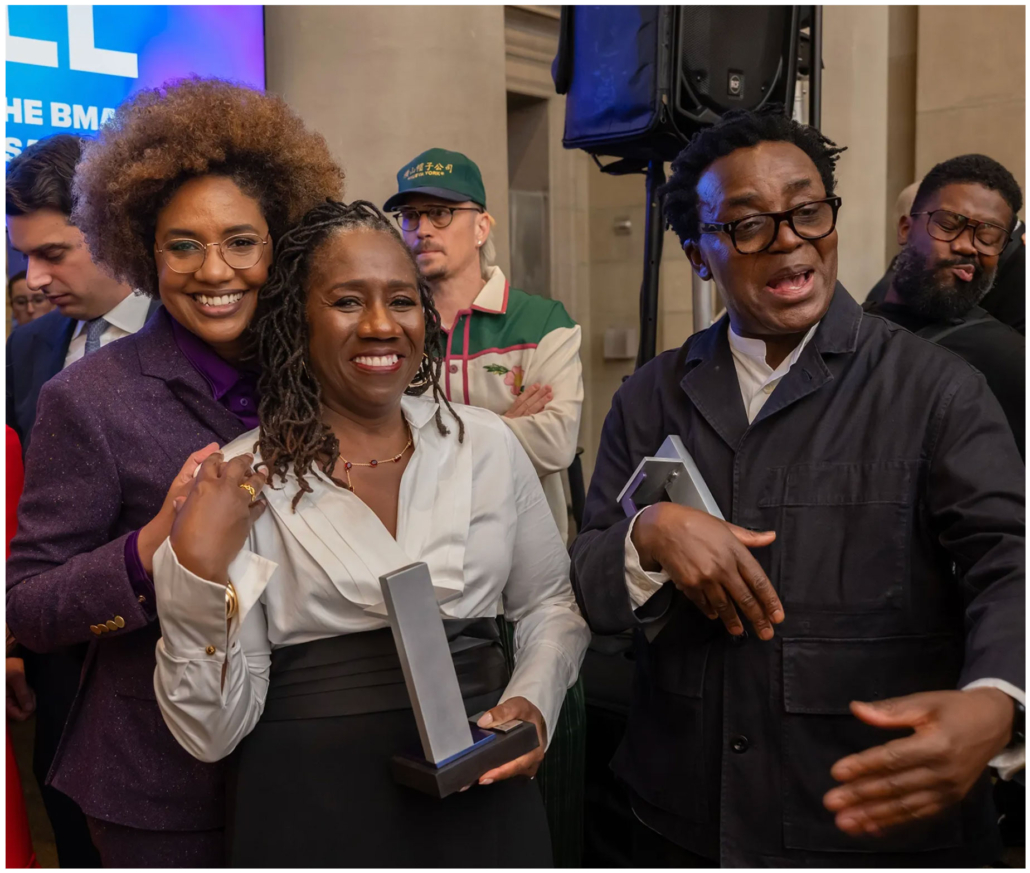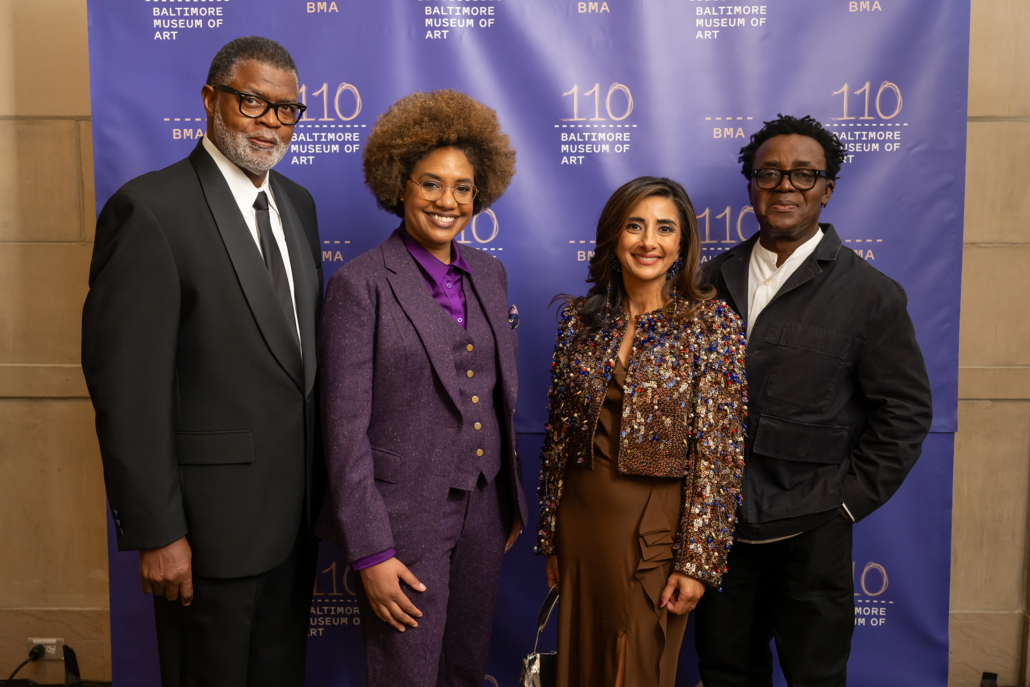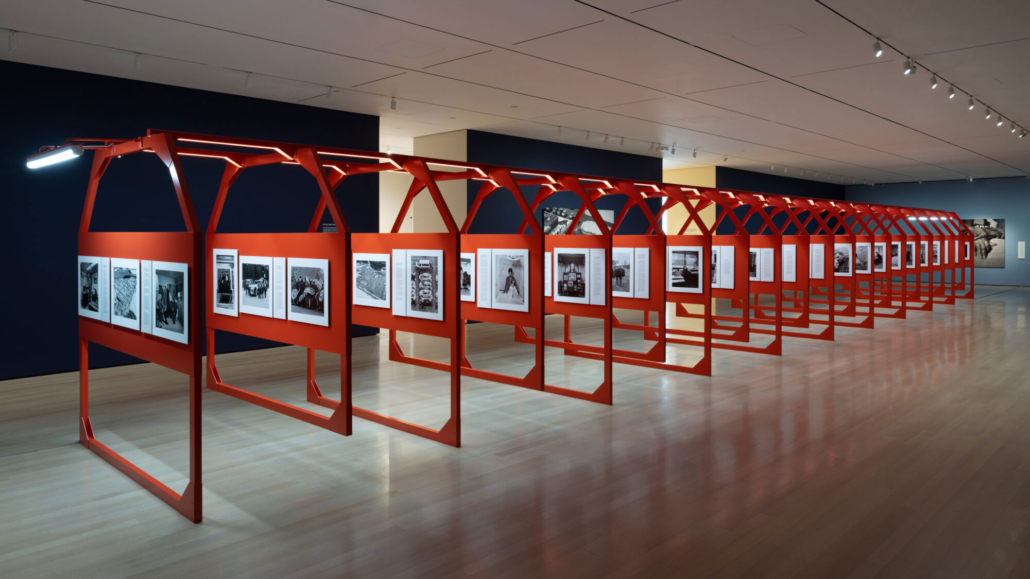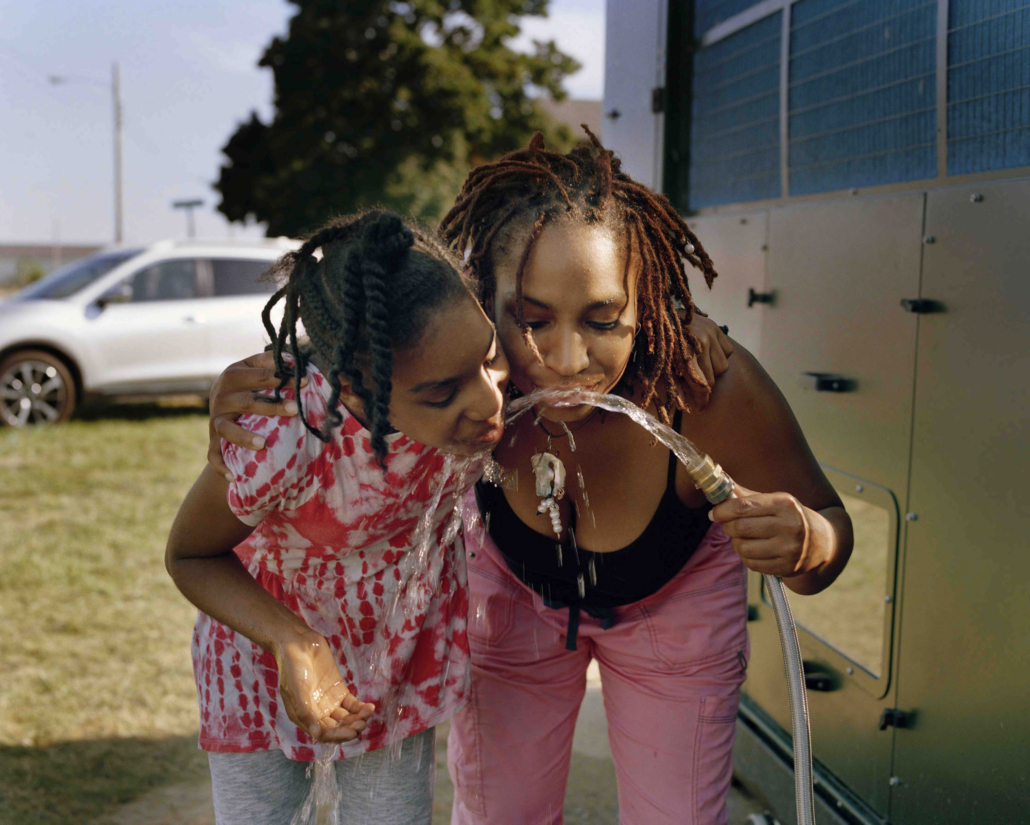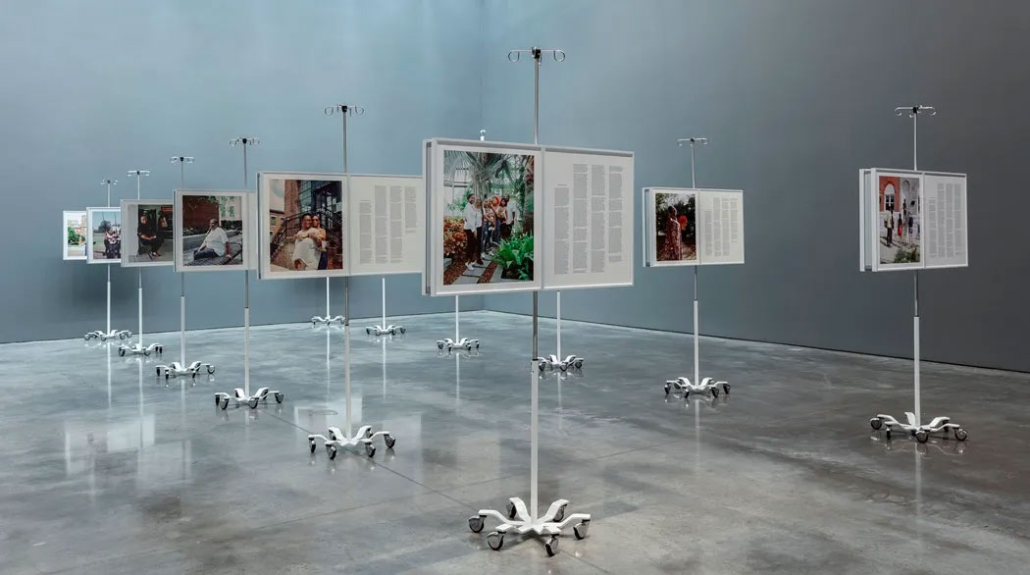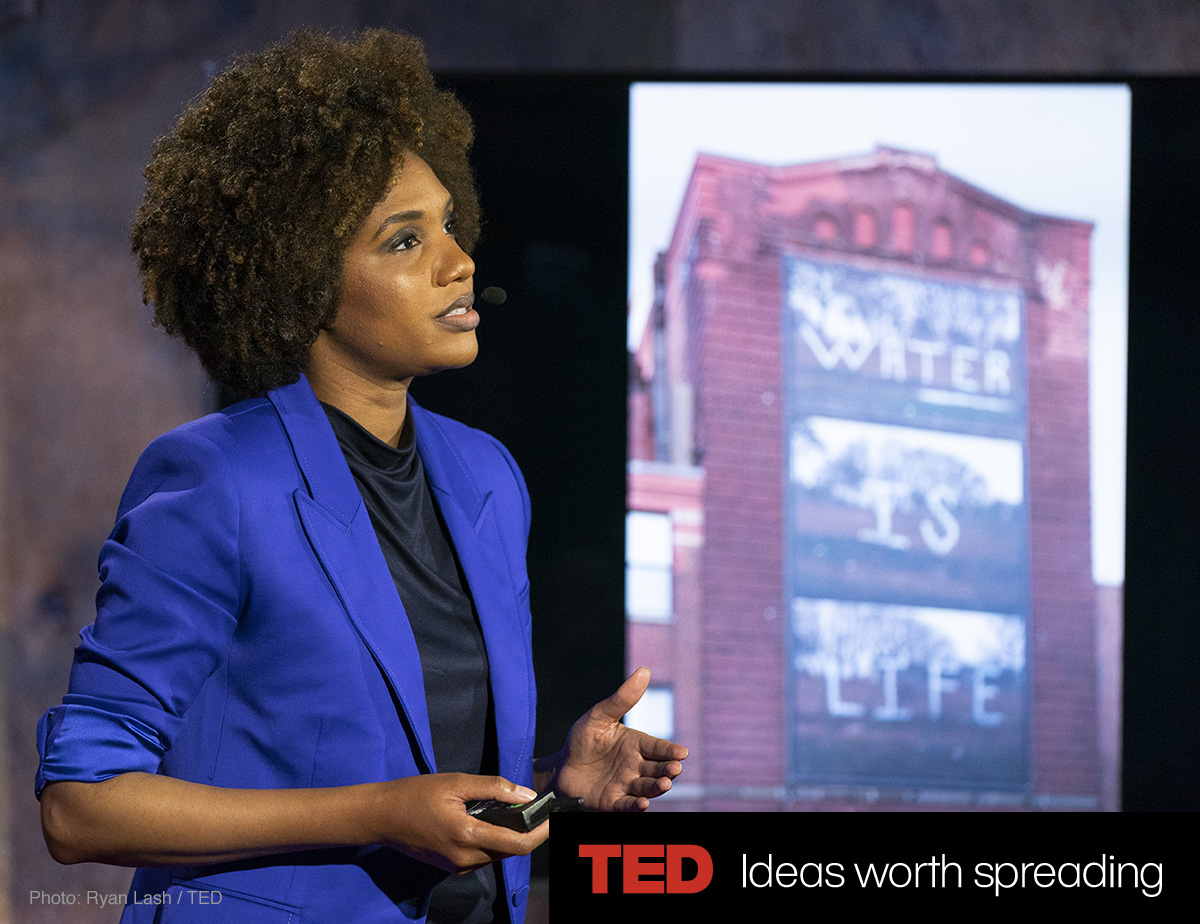Reflections on Home, Family, and Representation
Glasstire
by Jessica Fuentes
Review: Diaries of Home at the Modern Art Museum of Fort Worth
I’m a 41-year-old woman and for most of my life the adults around me — educators, mentors, family — have given me the same consistent advice, “Whatever you do, don’t get pregnant.” As an adolescent I was baffled by these words because having children was not an interest or priority to me — it felt like the adults around me didn’t know me at all. As a young adult, I was incredulous, as I saw it, it was my life and I would prioritize what was important to me. Even now (yes, I still get this advice), I scoff at the desire others have to voice their opinions about any person’s decisions on when (if at all) to start a family and how many children to have.
With age, I have come to at least empathize with the advice these well-meaning adults have tried to share. Yes, having children necessarily requires your life to shift — it is a physical, emotional, financial, life-long commitment. As an artist and single parent, having children has meant that some experiences are off the table for me. But, my children add much more to my life than I could explain in words. As their parent, I strive to shape them but in turn, they shape me as well. Often, my children appear in my art and in my writing, and even when they aren’t directly referenced, their spirit is there because they have changed my understanding of the world various times over. It’s like Octavia Butler wrote in Parable of the Sower, “All that you touch you change. All that you change changes you.”
It is with the weight of this lifelong advice about children and the act of balancing my decision to have a family and continue my artistic practice, that I walked into Diaries of Home at the Modern Art Museum of Fort Worth and felt understood and validated as an artist and mother in a way that no other exhibition has done. Co-curated by Andrea Karnes, the museum’s Chief Curator, and Clare Milliken, Assistant Curator, the show features pieces by 13 women and nonbinary artists working in photography and lens-based media to explore concepts of home, family, and community. Beyond my personal connection to the content in the show, as a photographer, I also appreciated the variety of photographic approaches presented.
[…]
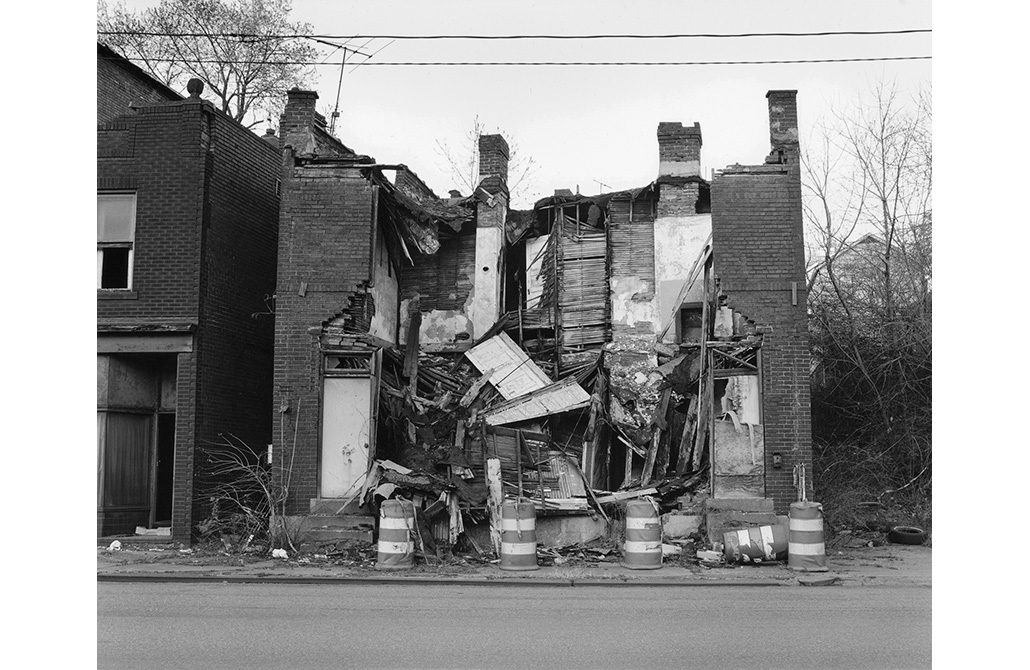
LaToya Ruby Frazier, “Home on Braddock Avenue,” 2007, gelatin silver print, 20 x 24 inches. Courtesy of the artist and Gladstone Gallery.
LaToya Ruby Frazier’s more documentary-style photographs of her hometown, Braddock, Pennsylvania, and scenes from Flint, Michigan fill a large gallery in Diaries from Home. Her series The Notion of Family was created from 2001 to 2014. Like Dugan’s Family Pictures, Frazier’s series documents three generations. Frazier presents the everyday moments and ordinary details that make up the lives of her grandmother, her mother, and herself. These images are juxtaposed with photographs of desolate scenes around the town, including a dilapidated building and a pile of rubble, together the body of work critiques the systemic and systematic issues faced by Black communities.
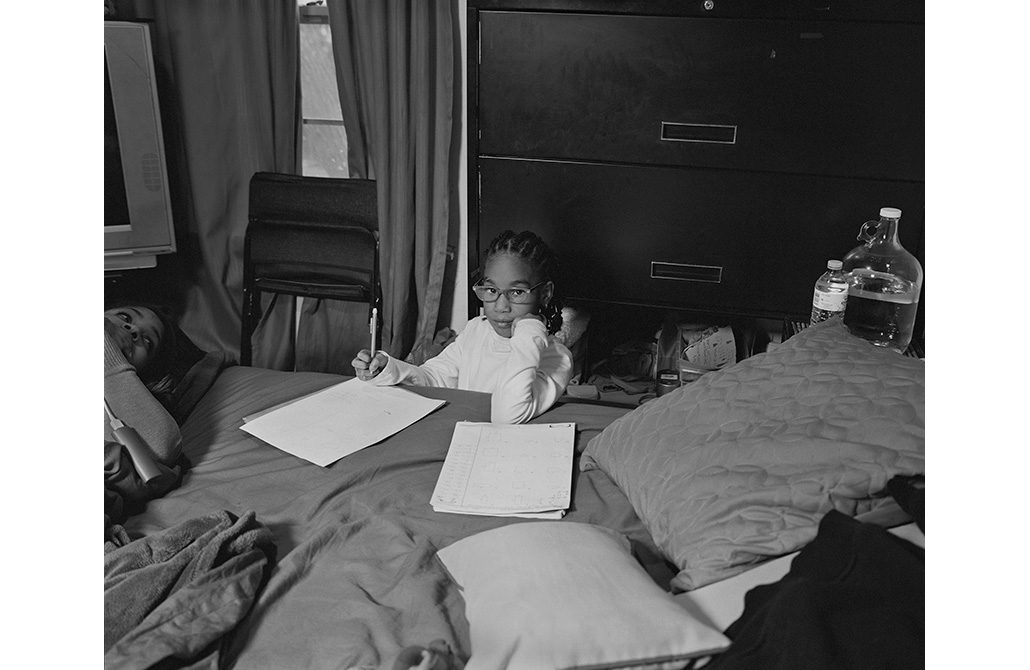
LaToya Ruby Frazier, “Zion Doing Her Math Homework from the International Academy of Flint (Est. 1999), Flint, Michigan,” 2016–17, gelatin silver print, 20 × 24 inches. Courtesy of the Artist and Gladstone Gallery. © LaToya Ruby Frazier
Frazier’s series Flint is Family, includes images taken from 2016 to 2021 detailing the lived experiences of the community as a result of the water crisis that began in April 2014, when the City of Flint switched its water source from Lake Huron to the Flint River. The photographs on view show students and community members awaiting the arrival of President Barack Obama, reference the continuation of daily moments like completing homework with water bottles ever present, and document the arrival of the atmospheric water generator, a temporary solution to the ongoing problem.
[…]
Beyond the artists I’ve mentioned, Diaries of Home includes works by Patty Chang, Nan Goldin, Deana Lawson, and Laura Letinsky. The exhibition covers a lot of ground and beautifully shifts between photographic and lens-based styles, showcasing traditional documentary and portraiture while also bringing in video works and AI-generated imagery. Presenting a range of styles is necessary in a photographic show because often the medium is viewed in confined and formal ways, when in reality there are many working to push the form in innovative directions.
The show also builds on the Modern’s 2022 exhibition Women Painting Women, by showcasing women and nonbinary artists, perspectives that have historically been left out of the art canon and other official records. Highlighting these artists in turn provides much needed representation of the varying experiences of female-identifying and nonbinary people, which creates counter-narratives to the socially constructed ideas that are prevalent around gender. These images and accounts capture moments of happiness, love, playfulness, strength, nostalgia, discomfort, loneliness, and struggle. They fill in nuances and reveal deeper truths about the past, present, and future in terms of family, home, and community. More than anything, Diaries of Home validates that there are a myriad of ways to live and document our lives, while reminding us that home is where we make it and with whom we make it.
Diaries of Home is on view at the Modern Art Museum of Fort Worth through February 2, 2025.
Courtesy of: Glasstire

